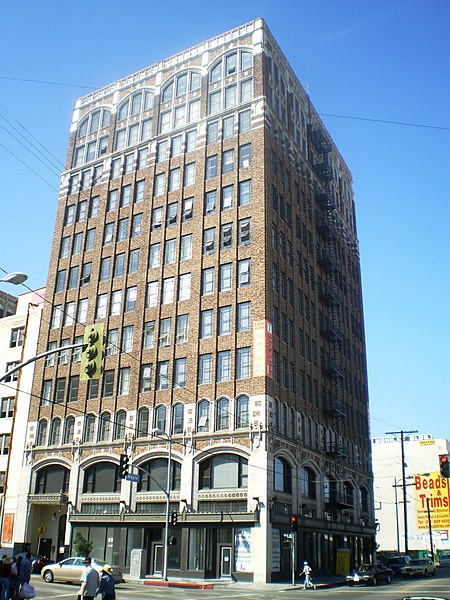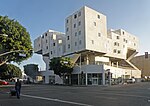Textile Center Building
1920s architecture in the United States1926 establishments in CaliforniaBuildings and structures in Downtown Los AngelesCommercial buildings completed in 1926Commercial buildings on the National Register of Historic Places in Los Angeles ... and 7 more
Gothic Revival architecture in CaliforniaItalian Renaissance Revival architecture in the United StatesLos Angeles Historic-Cultural MonumentsManufacturing plants in the United StatesRenaissance Revival architecture in CaliforniaResidential condominiums in the United StatesResidential skyscrapers in Los Angeles

Textile Center Building is a 12-story Gothic Revival and Italian Renaissance Revival architectural styled brick building located in the Los Angeles Fashion District. Designed by William Douglas Lee in the Gothic Revival style, the building opened in 1926 as a center for garment manufacturing. It has since been converted to condominiums.
Excerpt from the Wikipedia article Textile Center Building (License: CC BY-SA 3.0, Authors, Images).Textile Center Building
Maple Avenue, Los Angeles Downtown
Geographical coordinates (GPS) Address Website Nearby Places Show on map
Geographical coordinates (GPS)
| Latitude | Longitude |
|---|---|
| N 34.040833333333 ° | E -118.25027777778 ° |
Address
Southern California Flower Market (Los Angeles Wholesale Flower Terminal)
Maple Avenue 742
90014 Los Angeles, Downtown
California, United States
Open on Google Maps








